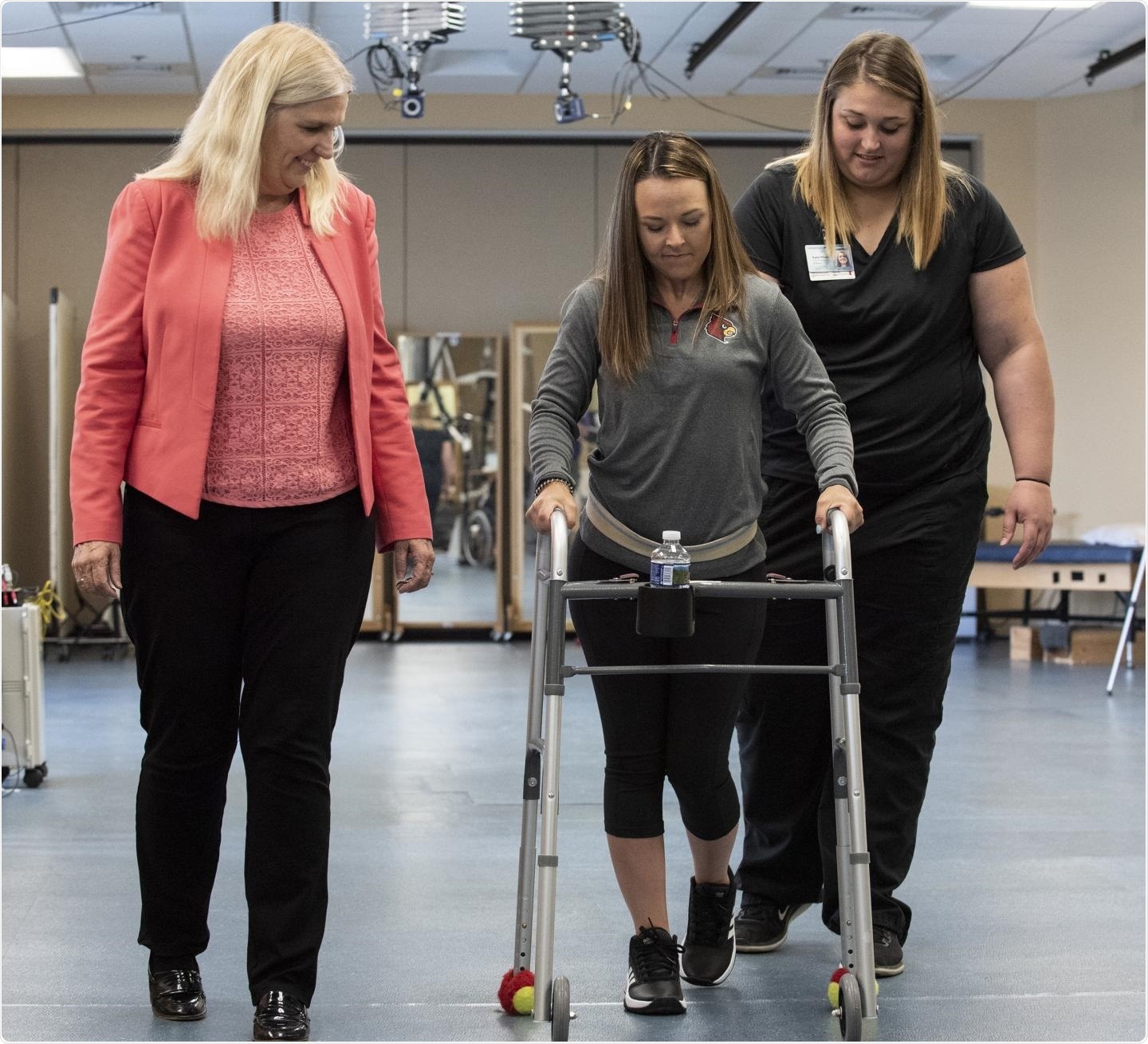Two of four participants in a study conducted at the Kentucky Spinal Cord Injury Research Center at the University of Louisville (UofL) have managed to walk over ground after having suffered traumatic complete spinal cord injury.

Participant Kelly Thomas, trainer Katie Vogt. Credit University of Louisville
The two participants, who had been paralyzed for years, regained their ability to stand and walk thanks to the coupling of epidural stimulation and daily locomotor training. The ground-breaking progress is published in the New England Journal of Medicine. In addition, all four of the people engaging in the study regained the ability to stand as a result of the therapy.
On joining the study, the participants were at least 2.5 years post injury and could not walk, stand or move their legs. Eight to nine weeks before having an epidural stimulator implanted, they received daily locomotor training for two hours per day, five days a week.
Epidural stimulation involves the application of an electrical current to the lumbosacral spinal cord, which corresponds to the neural networks involved in movement of the hips, knees, ankles and toes. Locomotor training involves repetitively practicing standing and stepping as an attempt to retrain the spinal cord to “remember” how walking works.
Prior to implantation of the epidural stimulator, the participants did not experience any improvement in locomotor ability, but post-implantation, they were able to take steps when trying to walk while the stimulator was on. Two of them were able to walk over ground, as well as on a treadmill, so long as they were assisted by a walker or poles to help them stay balanced.
Study author Susan Harkema says the research shows that it is possible to regain some brain-to-spine connectivity years after a person has experienced a spinal cord injury and to walk, stand, regain trunk mobility without physical assistance when using the stimulator and staying focused on taking steps.
While more clinical research must be done with larger cohorts, these findings confirm that the spinal cord has the capacity to recover the ability to walk with the right combination of epidural stimulation, daily training and the intent to step independently with each footstep,"
Senior researcher Claudia Angeli.